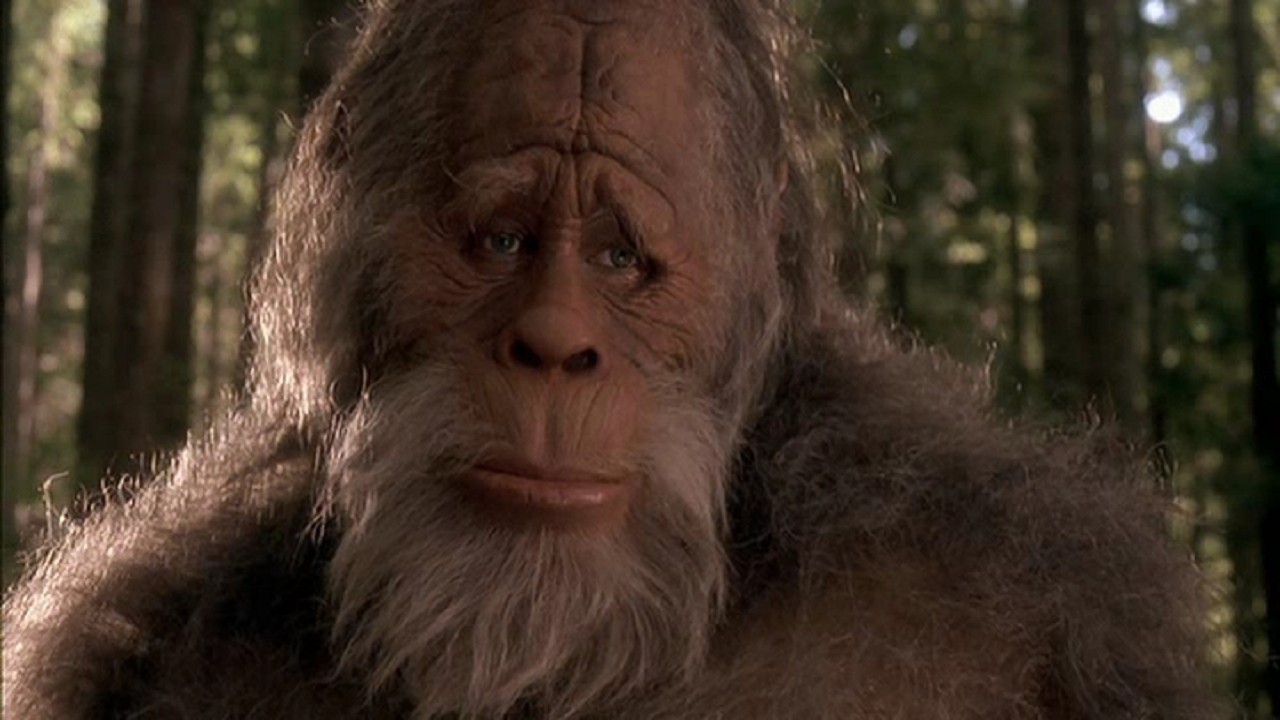Review: Harry and the Hendersons (1987)
Harry and the Hendersons is a fantasy-tinged family adventure from the late 1980s about a family adopting a Bigfoot. Revisiting the film, which I watched a number of times as a child, triggered a question that sometimes pops up among twenty- and thirty-somethings: Should you revisit cherished movies from childhood? The concern is that you might not like what you see with your adult eyes. I like to think that a good movie is a good movie is a good movie, and I bristle at reviews of children’s movies that basically say, “It’s not particularly good, but the kiddies should be entertained.” I find that both patronizing to children and disrespectful to the art aimed at them. At the same time, whenever we approach a movie that we first watched in the distant past and which we fondly remember, we must try to see it with open eyes. But is this possible, and if so, to what extent?
Harry and the Hendersons, with its plainly goofy premise, is an interesting case to consider these issues. While on a sporting trip in the Pacific Northwest, the Henderson family hits a big hairy animal with their station wagon. Thinking the strange creature is dead and that perhaps the body could turn some profit, the father, George Henderson (John Lithgow), lashes the furry body to the station wagon roof and they head back home to Seattle. Once home, they discover that the Bigfoot, named “Harry,” is very much alive, and that he is no mere animal.
Harry and the Hendersons never strays from the pattern of family movies about an outsider who changes the family that adopts it for the better. Depending on the movie and its relation to reality, the outsider might be a troublesome dog, a distant relative, a friendly alien, or, in this case, a kind-hearted Sasquatch. In the process, Harry and the Hendersons makes an argument for Harry’s personhood, indulges in cryptozoological speculation, and, of course, has some silly fun with the situation. I was surprised to discover, though, that the film’s overwhelming aim is sentiment (with a conservation message thrown in for good measure). I also happened to recently revisit E.T. the Extra-Terrestrial, and in comparison, Spielberg’s film is much more serious and deserving of its sentiment. Harry and the Hendersons is consistently cheap in the department of emotion. It tries to milk tender feelings without the proper characterization or narrative development.
Harry and the Hendersons is more enjoyable for its zany, sitcom-like approach to humour. I was struck by how little happens in terms of story in the movie. It’s largely a collection of scenes and scenarios, which it mines for moderate amusement. For instance, we start off with a scene playing with the dark humour of hitting some big hairy thing, and trying to figure out what you should do with the body. Once the family gets the Bigfoot home, the film spends a great deal of time just trying to settle the giant creature into the house. Harry is big and confused, and he smashes a lot of things. Later on, there is an extended sequence in which Harry is lost in the city and George must track him down. And throughout, a caricature of a French-Canadian (David Suchet) is trying to hunt down and bag the legendary creature.
In contrast to the story, the film deserves praise for its creature effects, created by the legendary Rick Baker. Harry’s appearance is a strange blend of realistic and cartoonish elements, but he’s given enough personality that we believe him as a character even if he doesn’t look like a real animal. There’s also something uncanny about Baker’s special effects. On the one hand, the facial movements—Harry’s smiles and looks of surprise—appear a bit awkward, but on the other hand the eyes are vivid (albeit creepy) in a way that a lot of CGI isn’t. As with all advancements in film technology, much has been gained but something has still been lost. Kevin Peter Hall, who also played the Predator, wears the Bigfoot suit, and he deserves some credit for the creation of Harry as well.
To return to my earlier question, it seems to me that the key is remembering and valuing the judgements you made as a child, since you made them for a particular reason at that particular time, while also recognizing that tastes develop and change and one’s appreciation can grow or diminish. Today, I might not consider Harry and the Hendersons a good movie, but I can still recognize that there’s something to it. For instance, I will always remember how the film stoked my childish interest in the Sasquatch, and forever tinged my impression of the Pacific Northwest, particularly with its delightful final shot suggesting that Harry is not the only one of his kind. Harry and the Hendersons meant something to me as a child, and it deserves that credit, even if I no longer appreciate the movie as a whole.
5 out of 10
Harry and the Hendersons (1987, USA)
Directed by William Dear; written by William Dear and Bill Martin & Ezra D. Rappaport; starring John Lithgow, Melinda Dillon, Margaret Langrick, Joshua Rudoy, Kevin Peter Hall, David Suchet, and M. Emmet Walsh.
